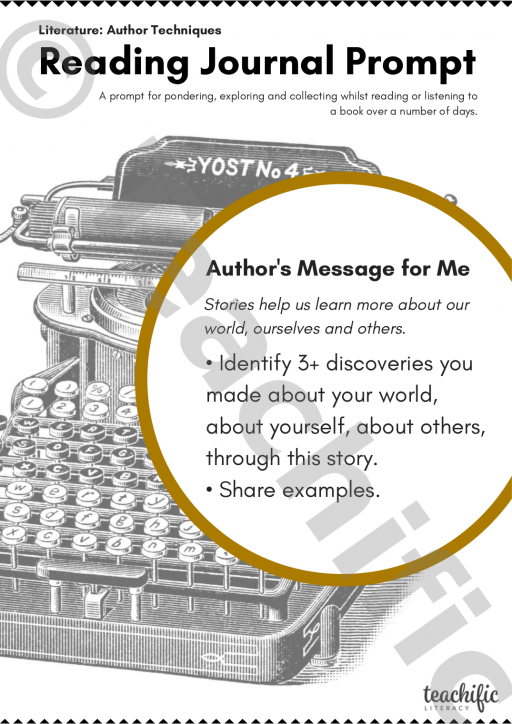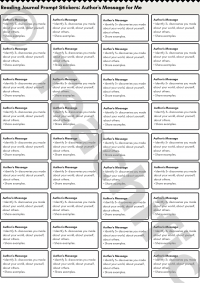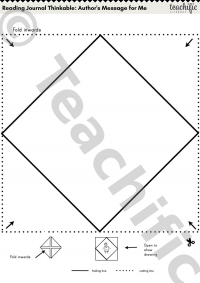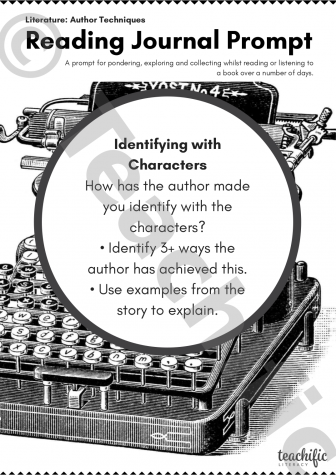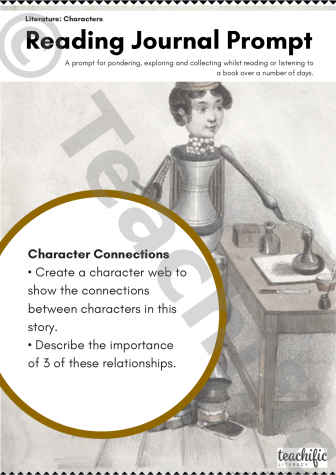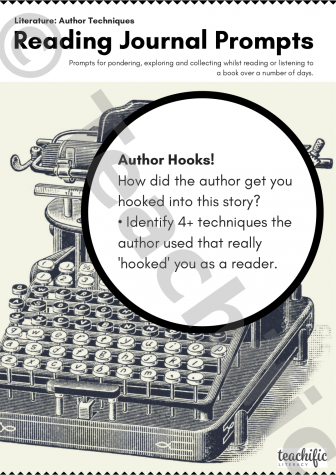About this teaching resource
Reading Journals are another one of my most favourite and essential tools for Yrs 3-6 readers. Reading Journal Prompts are like triggers to open the readers’ minds.
Capture your students’ imaginations and prompt their thinking with these big, open, exploring, wondering types of questions. Each of the prompts honours the child as thinker, and activates thinking in a range of complex ways. Catching thoughts through writing is an extraordinary way for readers to better understand what they are thinking! E.M. Forster lets us in on this insight: ‘How can I know what I think until I see what I say.’
So there we have it. Reading Journals are the powerhouses of thinking, understanding, comprehension. A good Reading Journal Prompt will allow every reader, with the very book they are reading, to explore the world of their book in powerful and meaningful ways.
Our Reading Journal Prompts enable readers to:
- Really get down to exploring and noticing character feelings and motivations (there’s a whole lot of inferring and making connections going on right there),
- Think about their own opinions, come up with new and interesting ideas (synthesising at it’s best)
- Wonder what will happen (predicting)
- Understand ourselves as a reader (metacognition)
How To (Routine):
- Introduce students to the Reading Journal prompt early in the week.
- Students read, maybe jot notes on a stickynote or bookmark, or include the prompt on their reading log so they can jot notes there.
- At the end of the week, students have a dedicated time to present their thinking in their Reading Journal. This is a place for thinking as it comes, no need for drafting for good copies. First draft it is. PLEASE!
- Date, Book Title, Author for every response.
Helpful Hints:
- Reading Journal responses are not only for ‘when I’ve finished a book’. They are the thinking and journeying and journaling done as the book is also in progress. After all, that’s where the thinking and comprehension happens. Some entries can be made after finishing a book too, but there should be a mix.
- Sometimes it’s powerful to use the Reading Journal response in relation to the class book being read aloud. Read, think, talk, as a community, and have students respond individually.
- Why not have your own enlarged Reading Journal book. (I like to use an A3 visual arts diary.) This is a great place to model what Reading Journal responses can look like. In K-2, this is especially valuable.
Materials:
Our Reading Journal Prompts include:
- Prompt
- Prompt sticker as a quick and easy record
- Thinkables (sometimes included, as a tool for organising thoughts)
Materials you’ll need:
- Reading Journal
- Prompt
- Prompt Sticker as a record
Australian curriculum alignment
Year 5
ACELT1609: Present a point of view about particular literary texts using appropriate metalanguage, and reflecting on the viewpoints of others.
Year 6
ACELT1614: Analyse and evaluate similarities and differences in texts on similar topics, themes or plots.
Reviews
There are no reviews for this resource yet, why not write one?
Report a problem
Please log in to report a problem with this resource
Want this teaching resource?
Members get great benefits such as FREE access to premium resources like this one, discounts on courses and more.
Download includes: PDF 3 pages 1.1 mb


